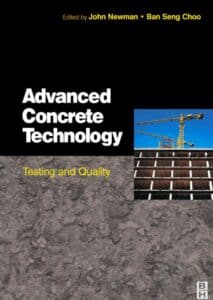Advanced Technology for Smart Buildings: A 2025 Guide to Smarter, Greener, and Safer Spaces
Introduction to Advanced Technology for Smart Buildings
Smart buildings are no longer futuristic concepts—they’re the new standard. In 2025, advanced technologies like AI, IoT, and renewable energy systems are revolutionizing how buildings operate, making them more efficient, sustainable, and responsive to human needs. This guide dives into the cutting-edge innovations shaping smart buildings today and how they’re solving real-world challenges.
What Defines a Smart Building?
A smart building uses integrated technologies to monitor, control, and optimize its operations. These systems work together to enhance comfort, reduce energy consumption, and lower operational costs.
Key Components of Smart Buildings
- IoT Sensors: Track occupancy, temperature, air quality, and lighting in real time.
- AI Algorithms: Predict maintenance needs, adapt HVAC schedules, and optimize energy use.
- Building Management Systems (BMS): Centralize control of HVAC, lighting, elevators, water systems, and security.
- Renewable Energy Integration: Incorporate solar panels, energy storage, and smart grid connections.
- Automated Controls: Adjust lighting, temperature, and ventilation based on occupancy and weather patterns.
Core Technologies Powering Advanced Technology for Smart Buildings

Internet of Things (IoT)
IoT devices collect and transmit real-time data on various building parameters. For example, motion sensors adjust lighting and HVAC systems based on occupancy, significantly reducing energy waste. Smart meters track electricity, gas, and water usage to identify inefficiencies. Leak detection sensors can notify maintenance teams before damage occurs, saving thousands in repairs.
Artificial Intelligence (AI)
AI analyzes data from IoT devices to optimize building performance. At 45 Broadway in Manhattan, AI reduced HVAC energy consumption by 15.8%, saving $42,000 annually and cutting 37 metric tons of CO₂ emissions. AI can also learn occupant preferences over time, fine-tuning indoor environments for comfort and productivity. Additionally, AI-based anomaly detection systems help identify issues like equipment failure before they escalate.
Building-Integrated Photovoltaics (BIPV)
BIPV systems replace traditional building materials with photovoltaic ones, allowing buildings to generate electricity directly from their structure. This integration not only supports sustainability goals but also enhances the aesthetic appeal of the building. In regions with high solar potential, BIPV can meet a significant portion of a building’s energy needs.
Smart Glass (Advanced Technology for Smart Buildings)
Smart glass adjusts its opacity or transparency in response to sunlight. This reduces the need for artificial lighting and helps maintain indoor temperatures, lowering HVAC loads. Some systems can be controlled via smartphone or integrated into the BMS. Variants include electrochromic, thermochromic, and photochromic glass, offering different mechanisms and efficiencies for energy management.
Digital Twins (Advanced Technology for Smart Buildings)
Digital twins are virtual models of physical buildings that use real-time data to simulate performance. They enable predictive maintenance, operational optimization, and scenario testing. For example, managers can simulate the impact of new HVAC settings before applying them in the real world. Digital twins also support planning for emergencies by modeling evacuation scenarios.
Edge Computing (Advanced Technology for Smart Buildings)
Processing data locally rather than in a centralized cloud reduces latency and bandwidth usage. This is especially critical for time-sensitive operations like fire detection systems or automated lighting control. Edge computing also supports resilience in connectivity disruptions by enabling local decision-making.
Machine Learning for Predictive Analytics
Machine learning enhances building automation by continuously learning from historical data. It enables systems to adapt to new usage patterns, identify emerging trends, and trigger maintenance alerts before system failures occur. These insights reduce downtime and extend equipment lifespan.
Real-World Applications of Advanced Technology for Smart Buildings

The Edge, Amsterdam
Dubbed the “smartest building in the world,” The Edge employs thousands of IoT sensors to monitor lighting, temperature, and occupancy. Its PoE (Power over Ethernet) lighting system delivers both power and data over a single cable, significantly improving energy efficiency. The building uses an AI-based app to assign desks and parking spots based on employee schedules.
Bloomberg HQ, London
This LEED-certified building uses CO₂ sensors to control airflow based on occupancy, saving up to 750 MWh of power annually and reducing emissions by approximately 300 metric tons. It also features advanced rainwater harvesting and greywater recycling systems. Acoustic sensors monitor ambient noise levels to maintain comfortable soundscapes.
Keppel Bay Tower, Singapore
After a $2.6 million renovation, this 22-year-old building became Singapore’s first zero-energy commercial building. Upgrades included:
- Smart lighting
- High-efficiency cooling systems
- Rooftop solar panels
- Occupancy-based ventilation control
These changes led to a 30% reduction in energy use and established a model for future retrofits in Southeast Asia.
Capital Tower, Malaysia
Capital Tower features advanced BMS, smart elevators that minimize travel time, and AI-enhanced HVAC systems. Real-time dashboards allow facility managers to track system health and energy performance. The building also integrates environmental sensors to adjust settings based on air quality and weather.
Benefits of Advanced Technology for Smart Buildings
Energy Efficiency
Smart buildings use data to fine-tune energy consumption. HVAC systems adjust based on weather forecasts, lighting adapts to natural light levels, and elevators operate more efficiently with predictive algorithms. Passive design strategies, such as thermal insulation and daylight harvesting, are often combined with smart tech to maximize efficiency.
Cost Savings
Operational costs drop significantly due to energy savings, predictive maintenance, and optimized space utilization. For example, companies can reduce unused workspace by analyzing occupancy trends. Insurance premiums may also decrease due to enhanced safety features like automated fire suppression and real-time alerts.
Enhanced Comfort and Productivity
Occupants benefit from personalized lighting, temperature, and air quality settings. Studies show that employees in well-regulated environments are more satisfied and productive. Indoor navigation apps and smart booking systems for meeting rooms further enhance convenience.
Sustainability and Compliance
Smart systems help buildings meet environmental standards like LEED, BREEAM, and WELL. They also support corporate ESG (Environmental, Social, and Governance) goals, increasingly critical for investor relations. Real-time sustainability dashboards enable transparent reporting and compliance with regulatory mandates.
Challenges and Solutions in Advanced Technology for Smart Buildings Implementation

Integration with Existing Infrastructure
Challenge: Older buildings often lack the infrastructure to support smart technologies.
Solution: Conduct thorough assessments to identify required upgrades. Use modular and scalable systems to enable gradual integration without full-scale retrofits. Wireless sensors and cloud-based controls can help bridge legacy systems with new tech.
Data Overload and Management
Challenge: Smart buildings generate vast amounts of data, which can be overwhelming to manage.
Solution: Implement robust data platforms and dashboards that offer real-time monitoring and actionable insights. Use AI-powered analytics tools to surface trends, anomalies, and performance metrics.
Cybersecurity Risks (Advanced Technology for Smart Buildings)
Challenge: Increased connectivity raises the risk of cyberattacks.
Solution: Prioritize cybersecurity through encryption, regular software updates, firewalls, and employee training programs. Employ zero-trust architecture and continuous monitoring to mitigate risks.
Stakeholder Buy-In
Challenge: Resistance from stakeholders can hinder implementation.
Solution: Demonstrate ROI and operational benefits. Engage stakeholders early in the planning process to foster alignment. Pilot projects and interactive dashboards help visualize results and build confidence.
Case Study: Indira Paryavaran Bhawan, India
India’s first on-site zero net energy building employs several cutting-edge technologies:
- Chilled Beam HVAC System: Uses convection currents for air conditioning, reducing energy use by up to 50%.
- Lux-Level Sensors: Regulate artificial lighting to maximize daylight use.
- Building-Integrated Photovoltaics: Supplies lighting load through integrated solar panels.
- Geothermal Cooling: Harnesses ground temperature for consistent cooling.
- Green Roof: Reduces heat gain and enhances insulation.
The building has achieved energy savings of over 60% compared to conventional structures, serving as a benchmark for government and commercial projects across South Asia.
How to Implement Advanced Technology for Smart Buildings Technologies
Start Small and Scale (Advanced Technology for Smart Buildings)
Begin with pilot projects. Test smart lighting in one wing or implement predictive HVAC in specific zones before scaling up. Use pilot results to build stakeholder trust and secure funding.
Choose Scalable and Interoperable Systems
Invest in solutions that can grow with your building’s needs and integrate with other systems. Look for open protocols like BACnet, Modbus, and MQTT. Prioritize vendors that offer backward compatibility and robust support.
Prioritize the User Experience
Ensure that smart technologies enhance comfort and ease of use for occupants. Collect feedback regularly and make adjustments. Include user-centric features like mobile controls, voice assistants, and occupancy-based personalization.
Maintain Systems Regularly (Advanced Technology for Smart Buildings)
Routine maintenance and software updates are crucial for keeping smart systems efficient and secure. Schedule regular system audits to identify inefficiencies or emerging vulnerabilities.
Stay Informed on Emerging Trends
Keep abreast of developments like AI-driven automation, blockchain for energy trading, digital twins for lifecycle management, and 5G-enabled sensors. Join industry forums, attend smart building conferences, and subscribe to research publications.
Frequently Asked Questions (FAQs) On Advanced Technology for Smart Buildings
What is the ROI on smart building technologies?
Initial investments can be significant, but energy savings, reduced maintenance costs, and enhanced tenant satisfaction usually result in ROI within 3-5 years. Government incentives and green building certifications can further improve financial returns.
Can smart technologies be retrofitted into existing buildings?
Yes, many technologies are designed for retrofitting. Wireless systems, cloud-based management, and modular hardware make retrofits feasible without extensive construction. However, some infrastructure upgrades may be necessary.
How do smart buildings contribute to sustainability?
They reduce energy consumption, cut carbon emissions, and often incorporate renewable energy sources. Additionally, water conservation, waste management, and air quality control are integral components of sustainable smart buildings.
Are smart buildings secure?
With the right cybersecurity measures, including encryption, firewalls, regular updates, and access controls, smart buildings can be highly secure. Ongoing monitoring and adherence to cybersecurity best practices are essential.
What future trends will shape smart buildings?
Trends include increased use of AI and machine learning, decentralized energy systems, integrated workplace experiences, health-focused design (biophilia, air purification), and enhanced interoperability among building systems.
Conclusion
Advanced technologies are transforming buildings into intelligent, responsive environments. By integrating AI, IoT, and sustainable systems, smart buildings enhance efficiency, comfort, and environmental responsibility. As these technologies continue to evolve, they will play a crucial role in shaping the future of our built environment. Now more than ever, embracing smart building solutions is not just a trend—it’s a necessity for a resilient, energy-efficient future. Organizations that adapt early will not only gain competitive advantage but also contribute meaningfully to global sustainability goals.
Related Topics
-
Design of Concrete Structures
-
Building Information Modeling Applications and Practices
-
Construction Estimating Using Excel
-
Estimating and Tendering for Construction Work
-
Elements of Civil Engineering and Engineering Mechanics






